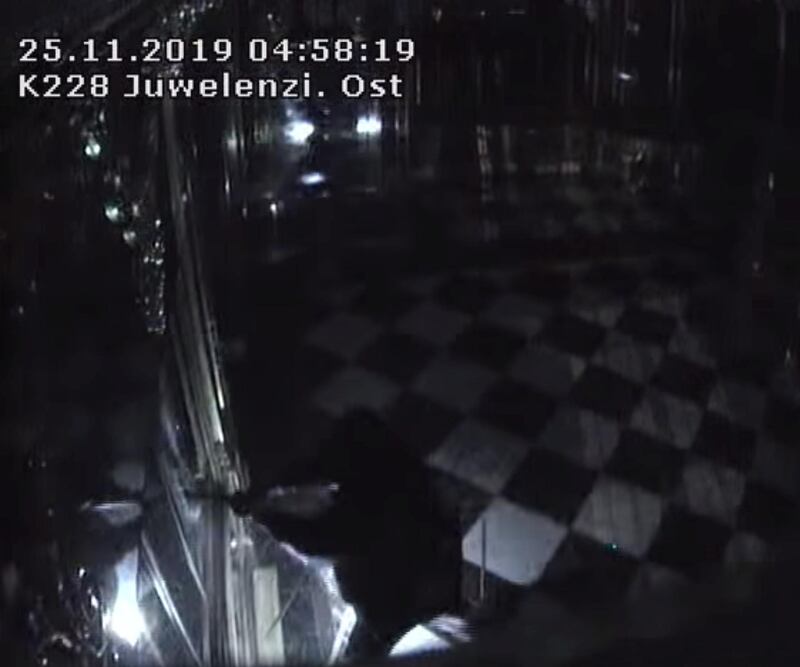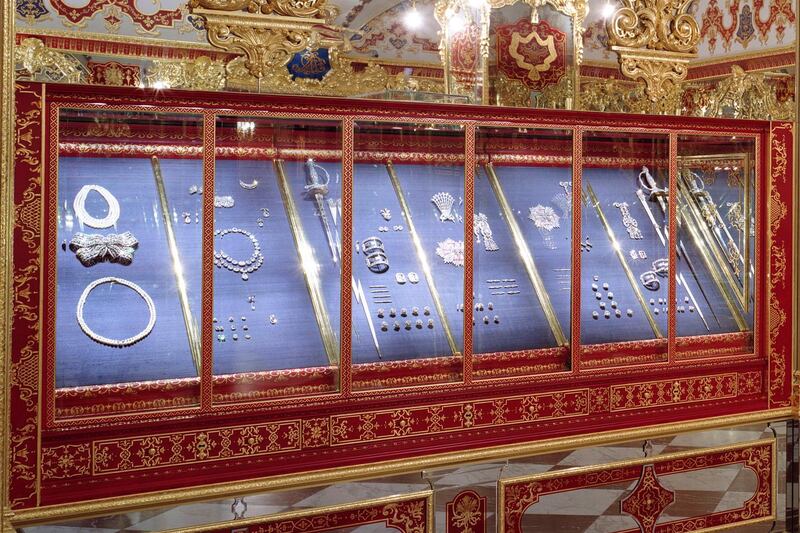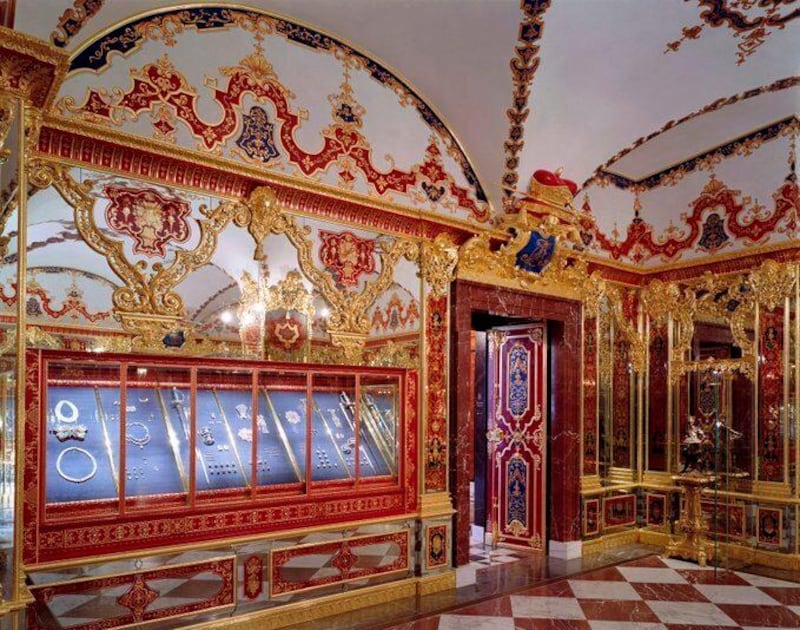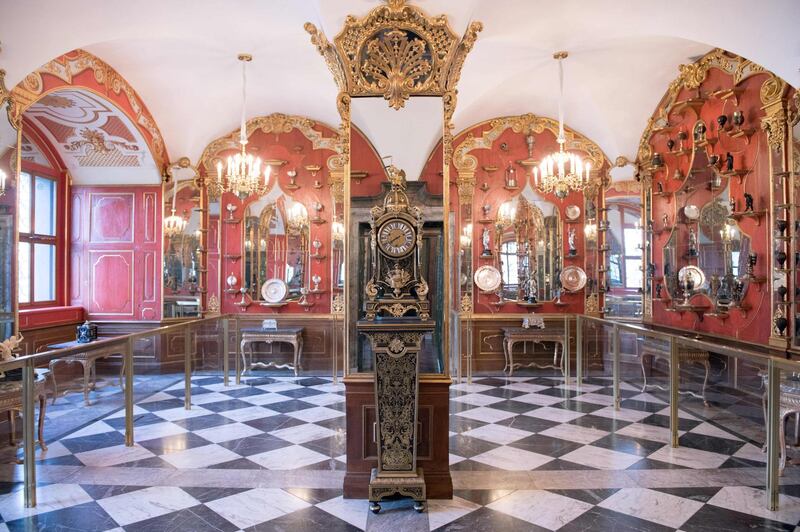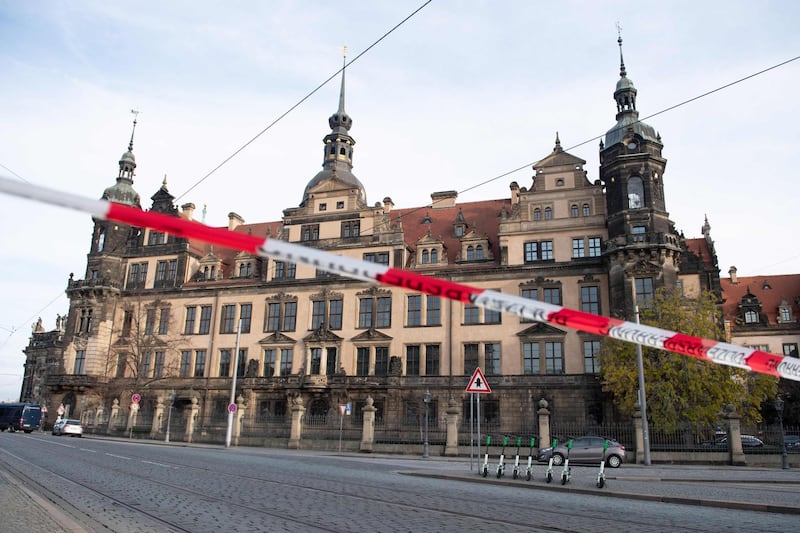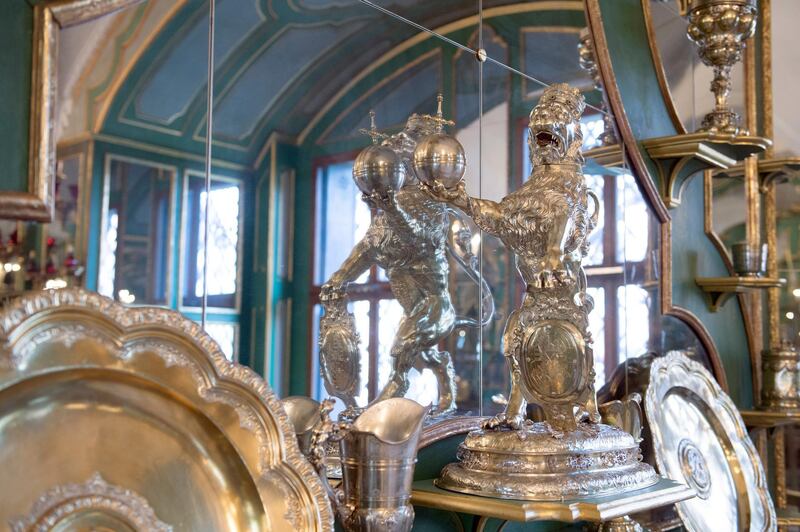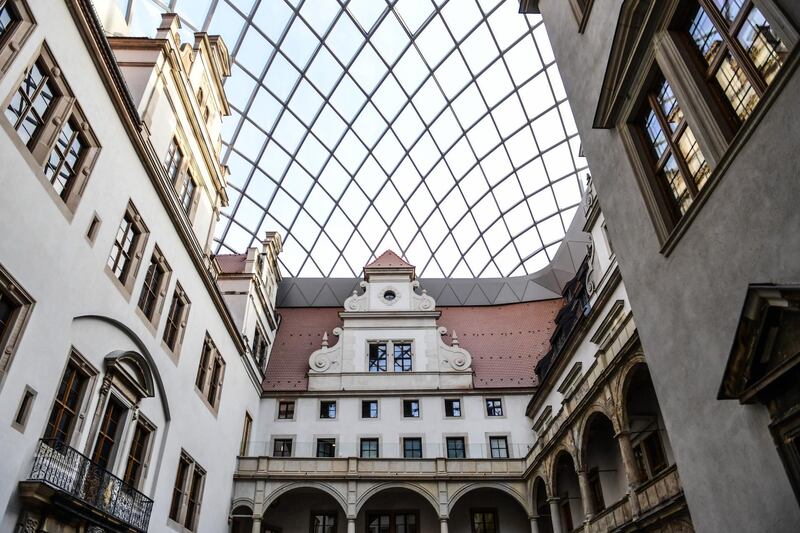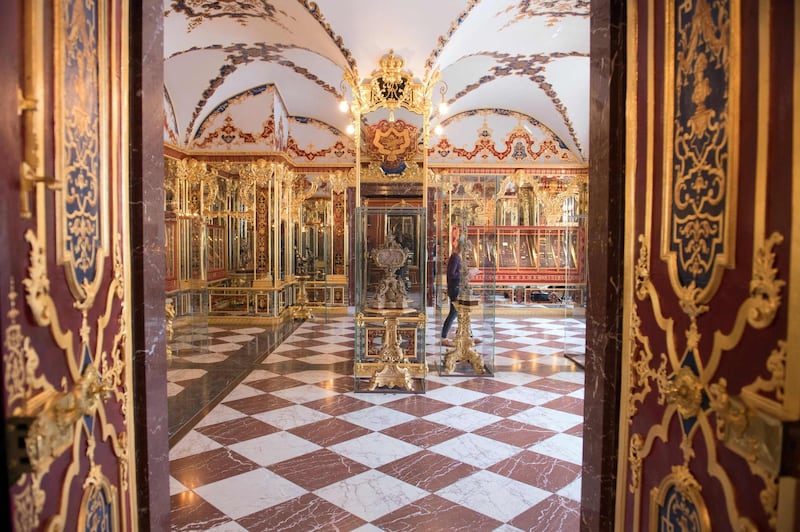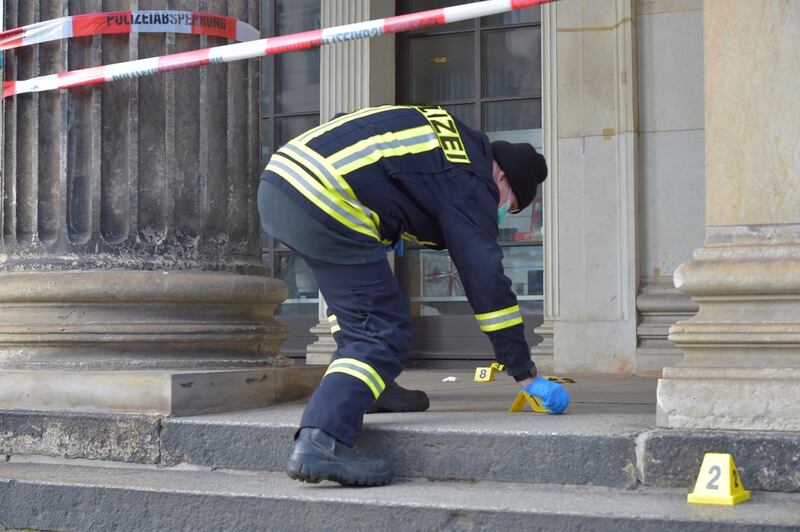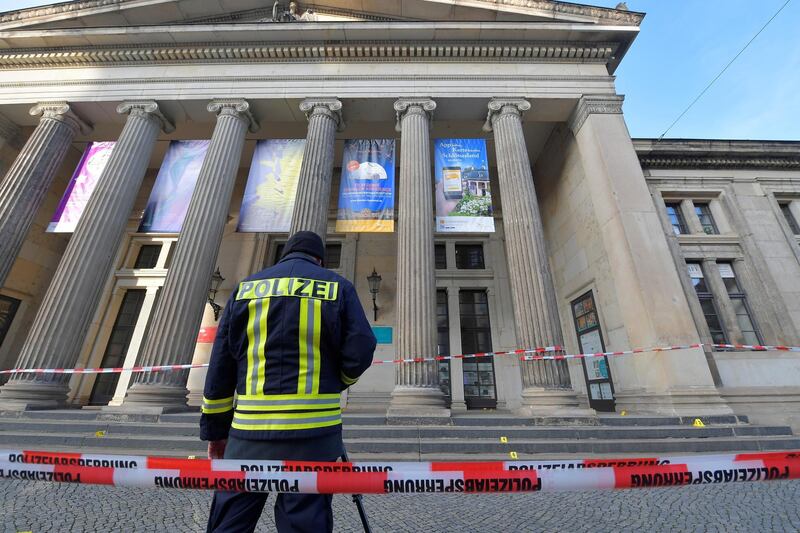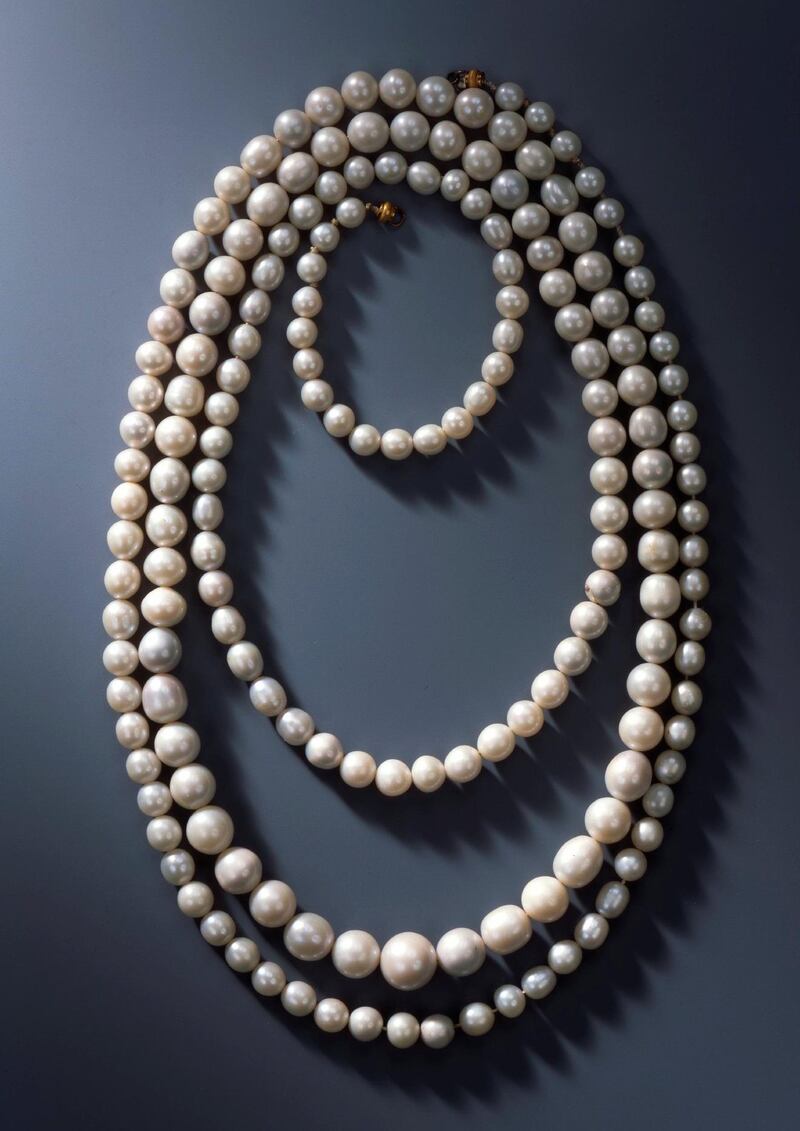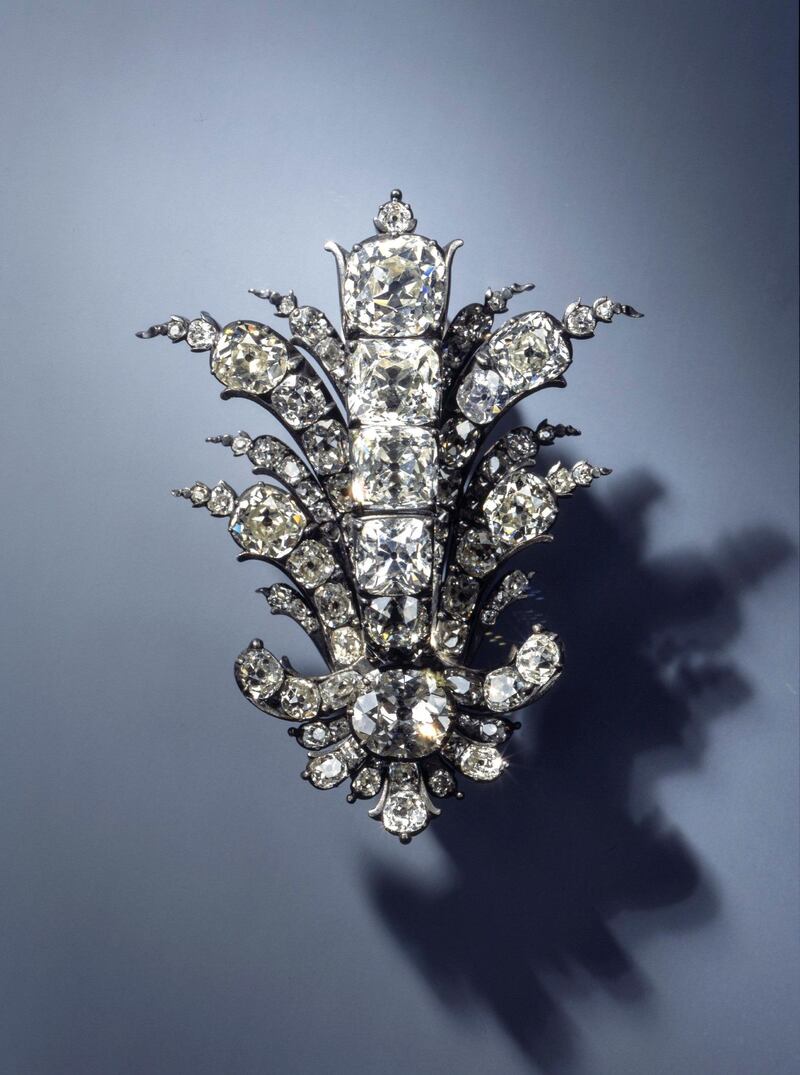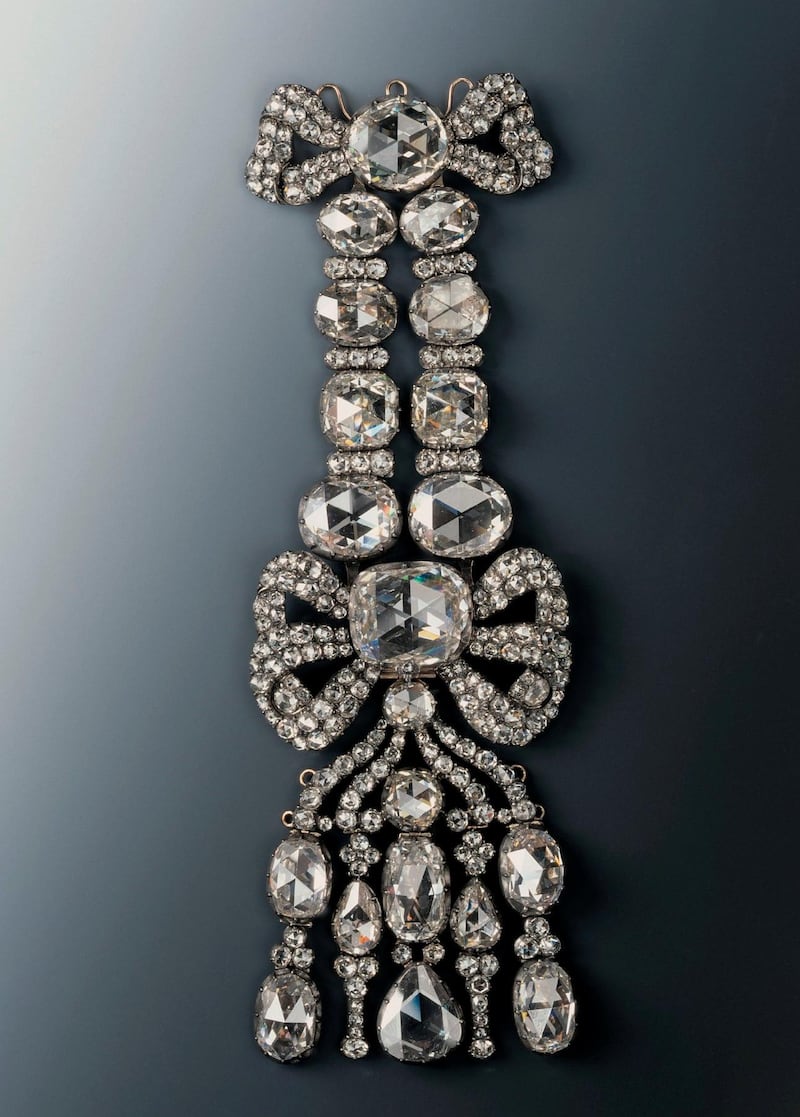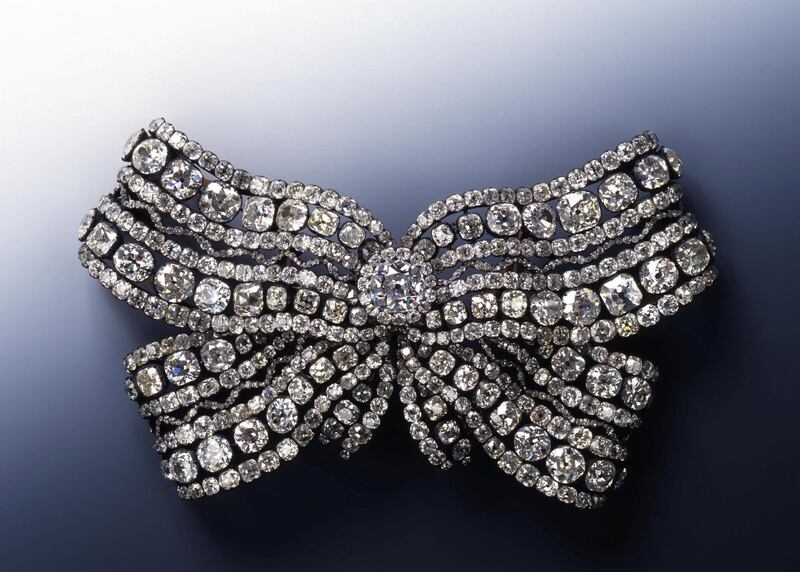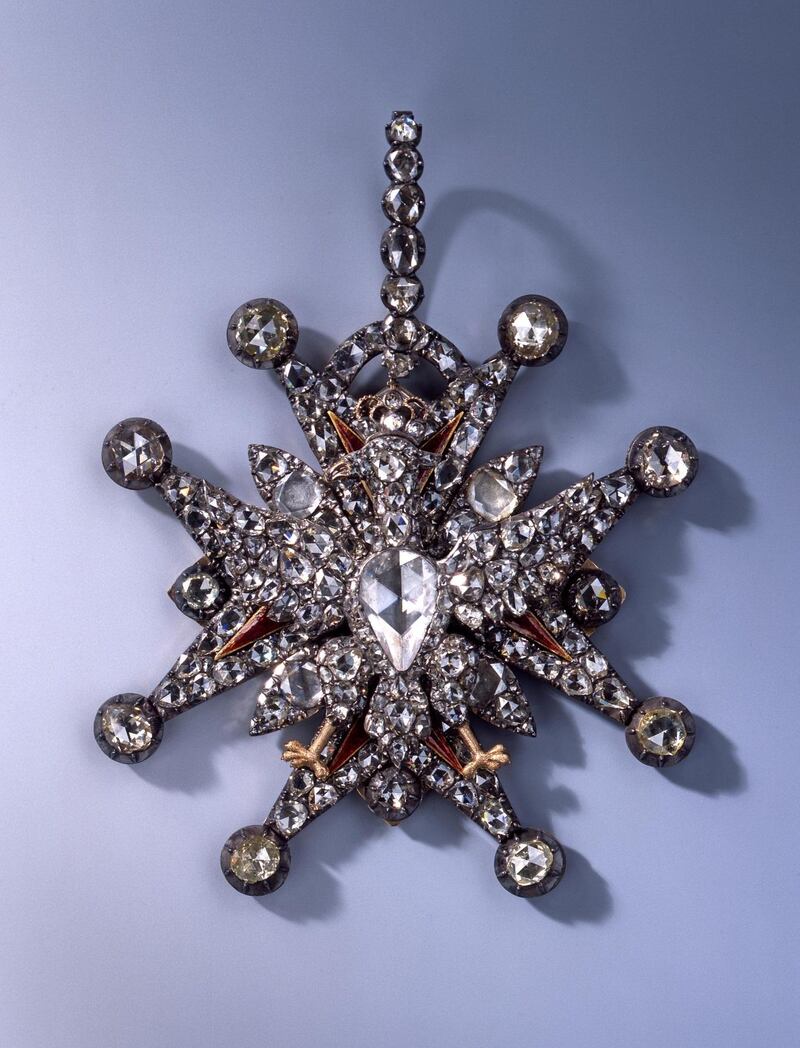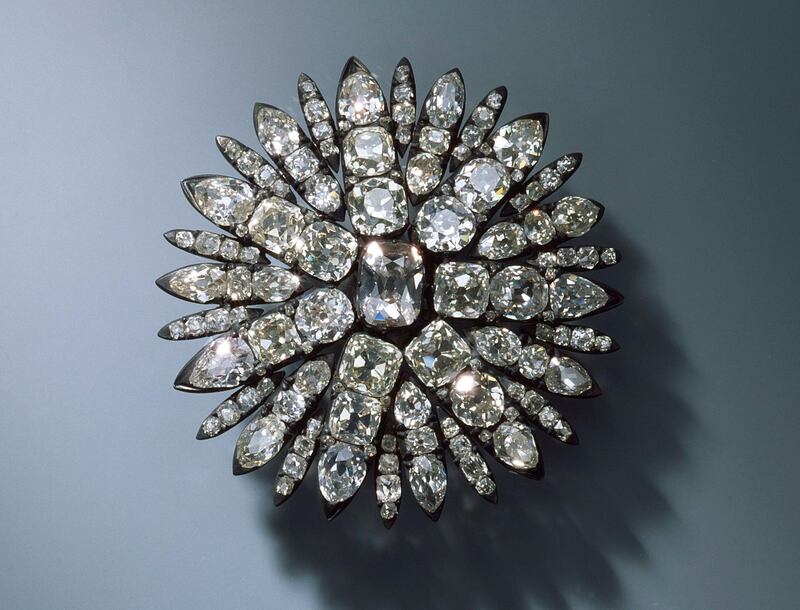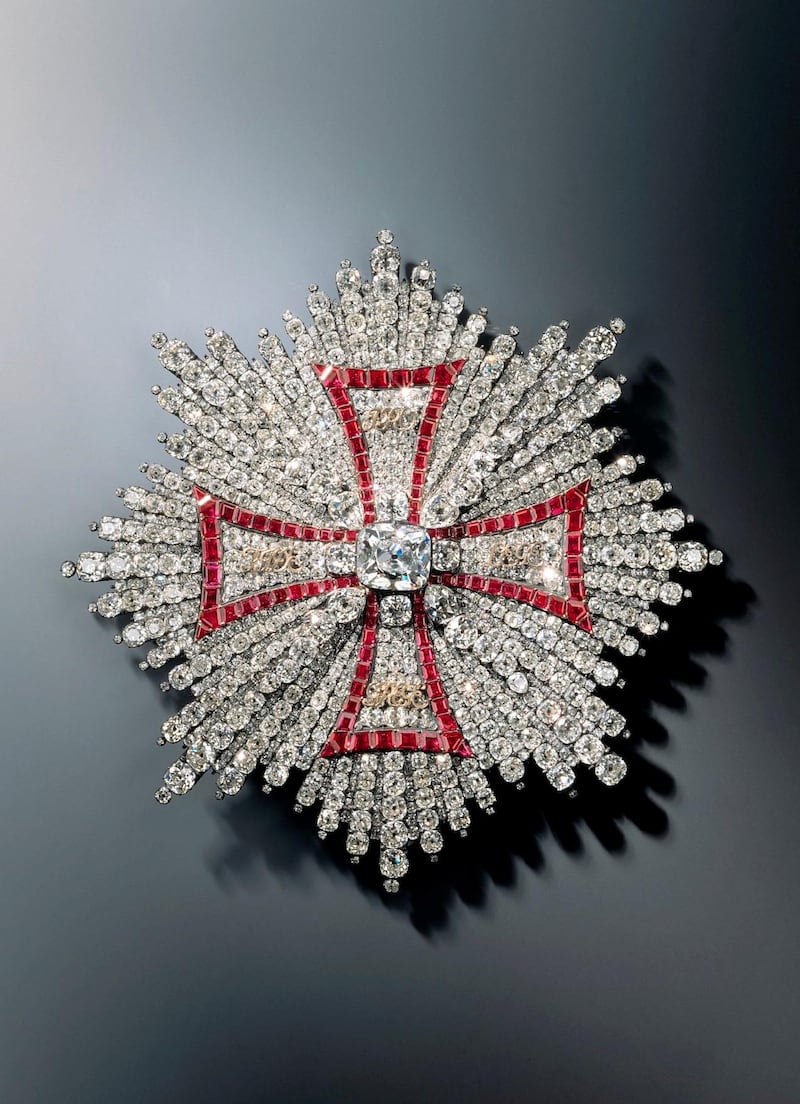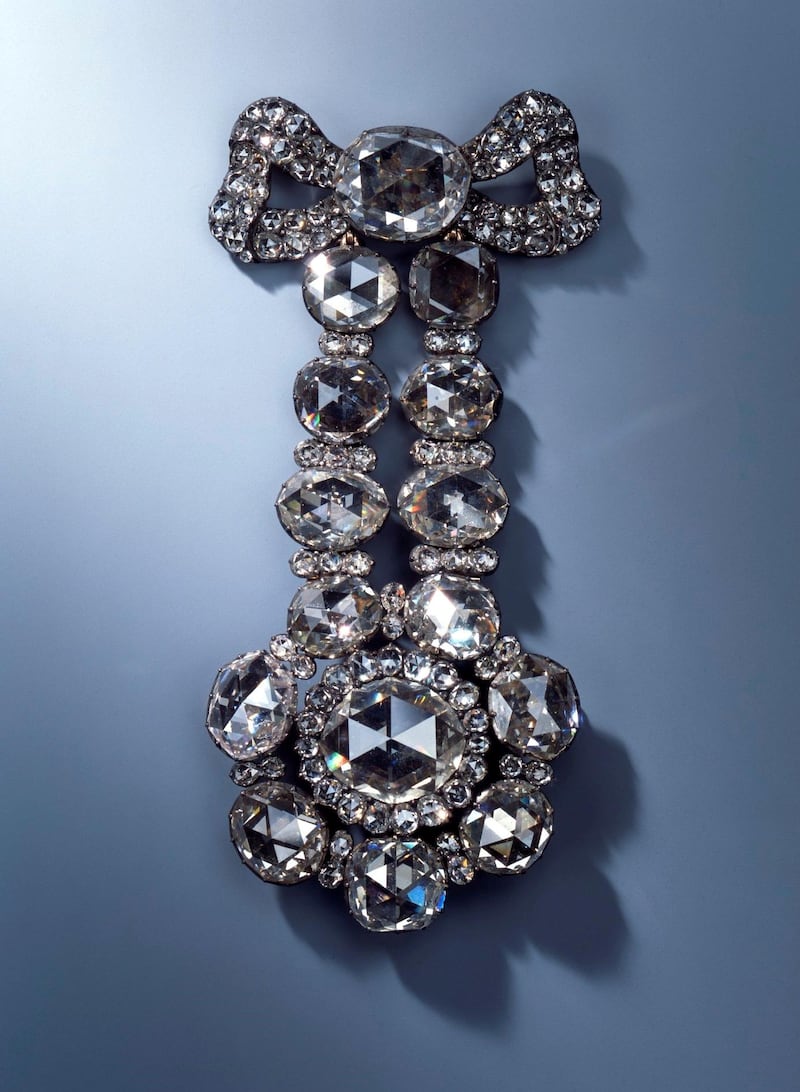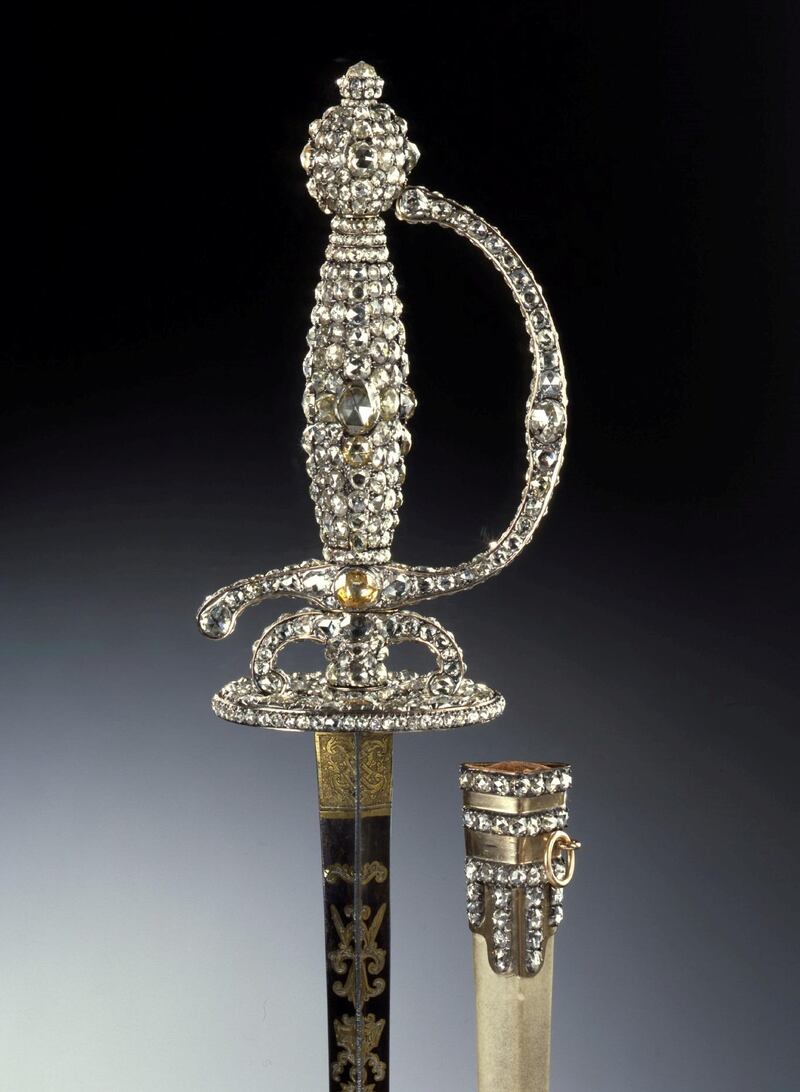Robbers made off with priceless 18th-century jewellery from a state museum in Dresden yesterday, police and museum directors said, in a major art heist that has shocked Germany.
The thieves broke into the Green Vault at the city's Royal Palace – home to around 4,000 precious objects of ivory, gold, silver and jewels – at dawn, after a power cut deactivated the alarm.
The stolen items included brilliant-cut diamonds that belonged to a collection of jewellery of 18th-century Saxony ruler Augustus the Strong.
Here's a closer look at some of the pieces that were stolen:
Museum directors had earlier feared much of three sets of diamond jewellery in the collection were snatched, but the loss turned out to be more limited than thought.
"The criminals didn't manage to take everything," the director of Dresden's state art collections, Marion Ackermann, told public broadcaster ZDF. Nevertheless, the stolen items are "of inestimable art-historical and cultural-historical value", she said.
"We cannot put an exact value on them because they are priceless," said Ackermann, adding she was "shocked by the brutality of the break-in".
The thieves launched their brazen raid after having set off a fire at an electrical panel near the museum in the early hours of Monday, deactivating its alarm as well as street lighting, police said. Despite the power cut, a surveillance camera kept working and filmed two men breaking in.
A video released by police showed one of the men, armed with a torch, using an axe to smash the display case.
"The whole act lasted only a few minutes," said police in a statement.
The suspects then fled in an Audi A6 and remain on the run. The apparent getaway car was found on fire later elsewhere in the city, said police, adding that the vehicle was being examined for clues.
Bild newspaper said the heist was "probably the biggest art theft since the Second World War".
Around 100 pieces snatched
Dirk Syndram, director of the Green Vault itself, said the targeted jewellery sets amounted to "a kind of world heritage", totalling about 100 items.
Founded by Augustus the Strong, Elector of Saxony in 1723, the Green Vault is one of 12 museums which make up the famous Dresden State Art Collections.
One of the oldest museums in Europe, the Green Vault holds treasures including a 547.71-carat sapphire gifted by Tsar Peter I of Russia.
The museum is now made up of two sections – a historic part and a new area. The break-in targeted the historic section, which contains around three-quarters of the museum's treasures and which has a strict limit on the number of daily visitors. Exhibits are arranged in nine rooms, including an ivory room, a silver gilt room and the central Hall of Treasures.
One of its most valuable pieces, the green diamond, is currently on loan to the Metropolitan Museum of Art in New York, where it is a headline attraction in the temporary exhibition Making Marvels: Science and Splendor at the Courts of Europe.
After the Royal Palace suffered severe damage in the Second World War, the Green Vault remained closed for decades before it was restored and re-opened in 2006.
'Hard-earned' treasures
Saxony's state premier said the heist went beyond the value of the artefacts stolen.
"The treasures that are found in the Green Vault and the Dresden Royal palace were hard-earned by the people of Saxony over many centuries," Michael Kretschmer said. "One cannot understand the history of our country, our state, without the Green Vault and Saxony's State Art Collections."
The theft is the second high-profile heist in Germany in recent years, after a 100-kilogram, 24-karat giant gold coin was stolen from Berlin's Bode Museum in 2017.
Dresden police said they were in contact with colleagues in Berlin to examine "if there are any connections and if there are similar patterns in the crimes".
Germany's Culture Minister Monika Gruetters said that protection of museums and cultural institutions was now of "the highest priority".
"The theft of items which make up our identity as a nation of culture strikes at our hearts," she said.

